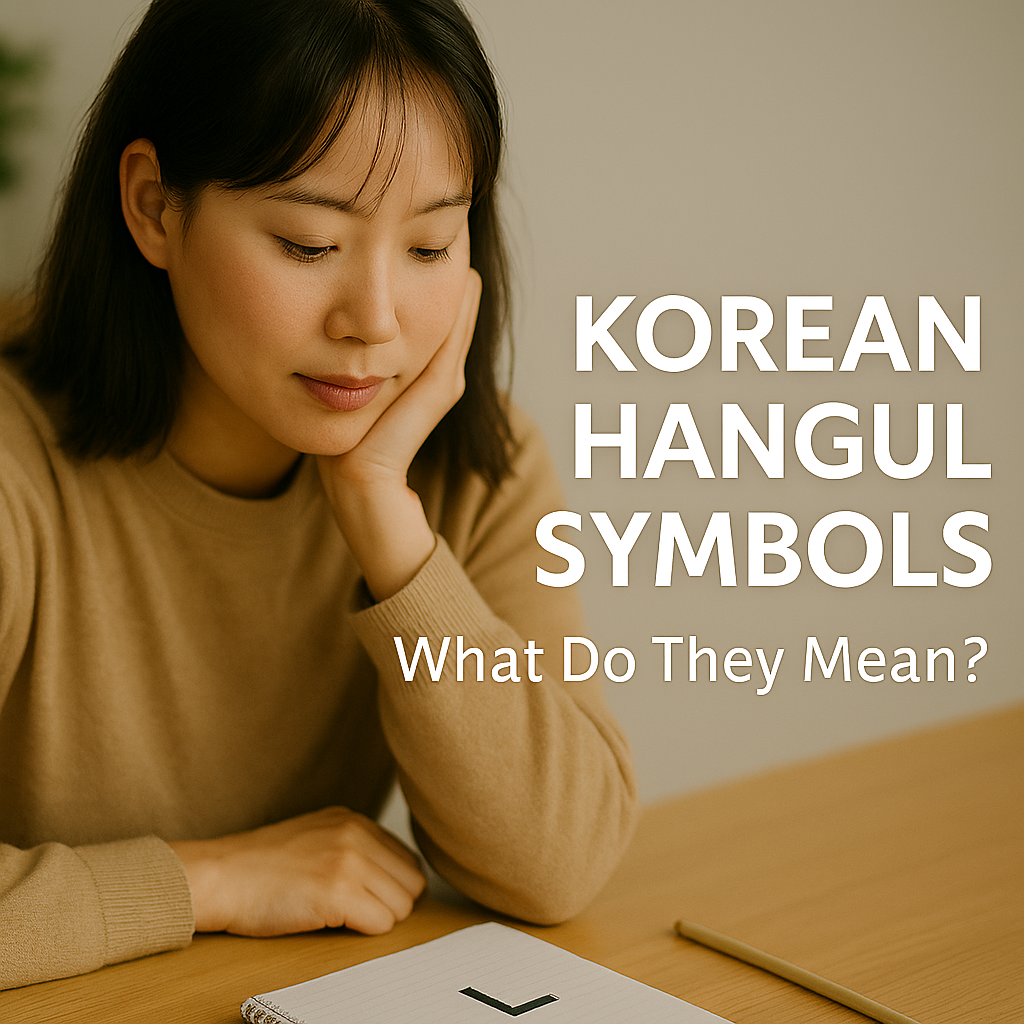Here’s How The Korean Hangul Symbols Were Designed
If you’ve ever seen some Korean Hangul Symbols and thought, “What do these symbols mean?”, you’re not alone. To many new learners, the Korean alphabet looks like a series of circles, lines, and boxes—almost abstract. But those shapes aren’t random.
That’s because they’re part of Hangul, Korea’s writing system, and they were designed with purpose.
What Are Korean Hangul Symbols?
The term “Korean Hangul symbols” usually refers to the individual letters, called jamo. These letters combine to form syllable blocks like 한 or 글.
There are:
14 basic consonants
10 basic vowels
Plus combined letters (like ㅘ or ㅢ), making a total of 40 modern sounds
But what makes Hangul so unique is how King Sejong created these symbols.
These Korean Hangul Symbols Didn’t Evolve – They Emerged Through Design
Unlike many writing systems that developed over centuries, King Sejong the Great and a team of scholars invented Hangul in the 15th century by . So what was their goal? Create a writing system that was easy for everyday people to learn.
That’s because each symbol was built around logic.
Shapes That Match Sounds
Now, here’s where it gets brilliant:
Consonants reflect the shape your mouth makes.
For example: ㅁ (m) represents a closed mouth
ㄴ (n) shows the tongue touching the roof of your mouth
ㄱ (g/k) mimics the tongue blocking the back of the throat
Vowels are based on three elements:
A dot (now a short stroke) = the sun
A horizontal line = the earth
A vertical line = the human
So these shapes combine to form vowel sounds in a way that reflects harmony in the universe.
So Why Does It Matter?
Understanding the design of these Korean Hangul symbols makes learning faster. You stop seeing random shapes—and start seeing patterns. You see how form follows function.
Hangul isn’t just beautiful. It’s smart.
Ready to start reading Korean?
Master the 40 Hangul symbols, and you’ve unlocked the door to the entire language.
Ready for More?
Of course, this is just the beginning. We’ve created a full list of 100+ K-Drama words and expressions, organized by category and matched with flashcards.
So if you’ve ever wanted to understand what they’re really saying in your favorite scenes, this is the easiest way to start.
🎯 Are You Over 50 or Struggling to Learn Korean?
If you’re over 50 or just finding Korean harder than you expected, you’re not alone.
We also offer free 1-on-1 strategy sessions for learners who want a clear, personal plan that actually works. Especially useful if traditional apps and videos haven’t helped.


Leave a Reply